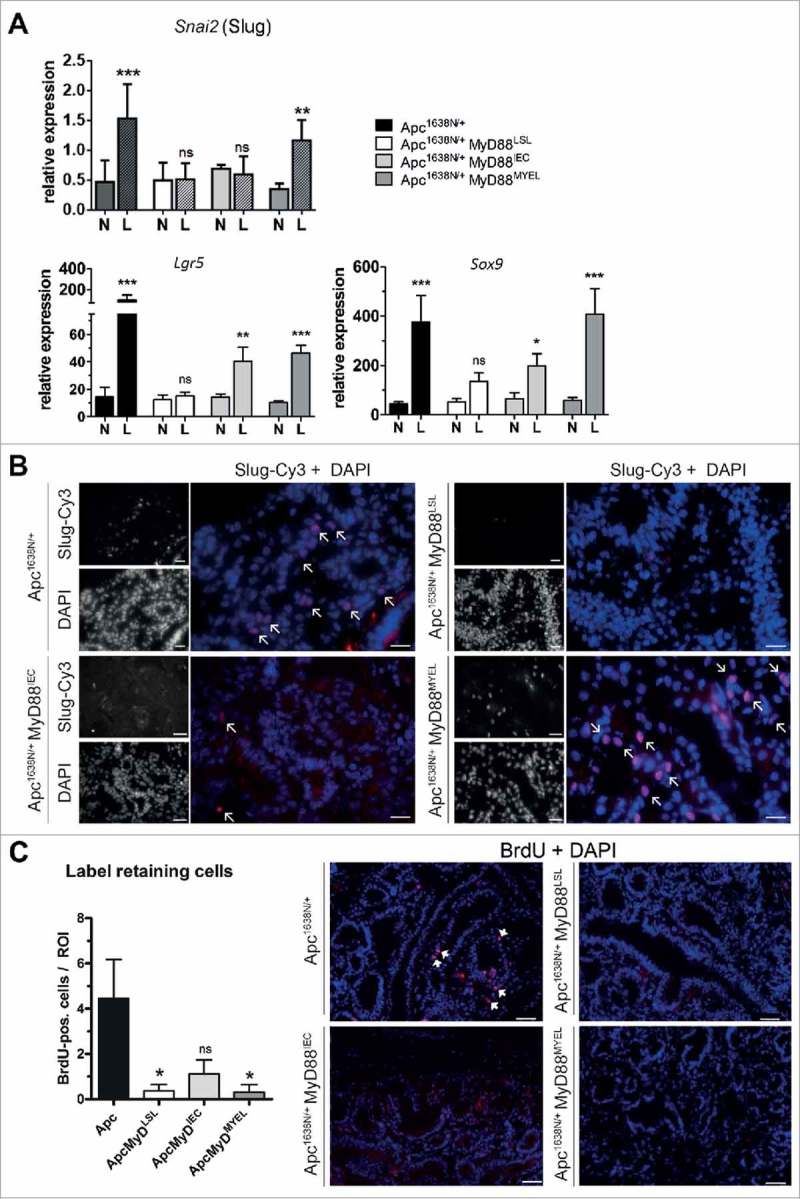Figure 4.

MyD88 signaling critically contributes to epithelial-mesenchymal transition (EMT) and stemness. A, MyD88 signaling is required for increased intratumoral expression of the EMT-inducing transcription factor Slug (Snai2), and the stem cell markers Lgr5 and Sox9. Re-expression of MyD88 in myeloid cells rescues the increase of Slug, whereas Lgr5 and SoX9 are partially rescued by expression in epithelial cells as well, as judged by qRT-PCR (n = 10 per group). B, Immunofluorescence staining on tumor cryosections (n = 5 per group). Slug is markedly expressed in the nuclei of tumor cells at the invasive front in the parental Apc-model, but is completely absent in MyD88-deficient mice. Partial and full rescue of Slug-expression can be seen upon re-expression in IECs, and in myeloid cells, respectively. Anti-Slug staining in red (fluorophore Cy3), nuclear counterstaining with DAPI in blue (size bars: 40 µm). C, Quantification of long-term label retaining cells in tumor tissue sections. Mice (n = 4 from each group) were subjected to BrdU injections for 10 days, sacrificed after 55 days of chase period. The number of BrdU-positive cells per low-power field (ROI) was significantly reduced in MyD88 deficient mice compared to parental Apc mice, and was essentially not rescued by tissue-specific re-expression. Right side: representative tumor tissue cryosections, stained with anti-BrdU antibody (red, positive cells marked with arrows), nuclear counterstaining with DAPI in blue (size bars: 50 µm). *P < .05; ns: not significant.
